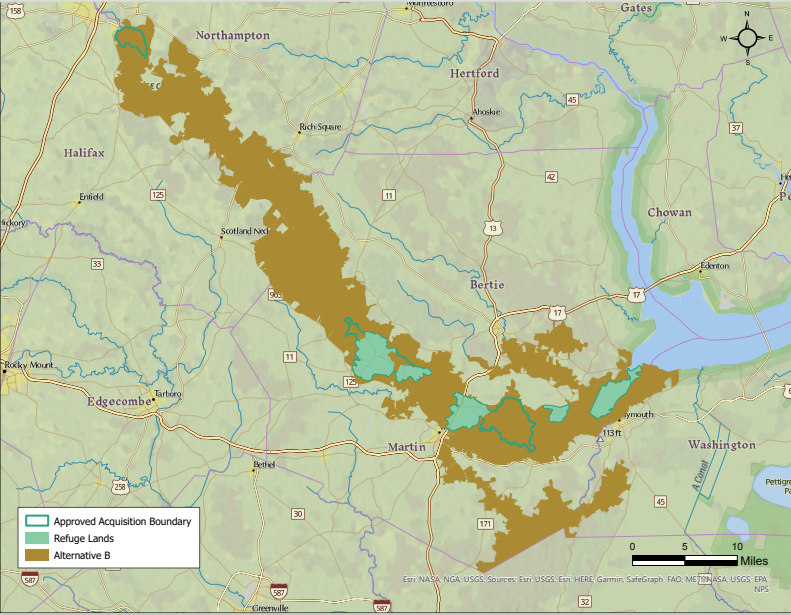The Roanoke River bottomlands in eastern North Carolina are some of the most extensive forested wetlands in the U.S. The site hosts a wide diversity of bird life, from rare species like Swainson’s and Cerulean Warblers to wintering and migratory waterfowl.
Audubon and more than 300 of our members submitted comments in support of the U.S. Fish and Wildlife Service's proposal to expand the Roanoke River National Wildlife Refuge and bring more of this important habitat into conservation.
“The Roanoke River bottomlands is one of the last big wild areas on North Carolina’s inner coastal plain,” Audubon North Carolina Interim Executive Director Curtis Smalling said. “The southeast has lost a majority of its functional bottomland forest in the last century, and the refuge expansion will help us keep what remains. We’re very pleased the U.S. Fish and Wildlife Service is working to grow its conservation of this critical habitat and are proud of our members for speaking up in support.”
The current boundaries of the wildlife refuge encompass 21,000 acres and is part of a larger 100,000 acre protected area complex that involves NC Wildlife Resources Commission and the Nature Conservancy. The proposal could bring up to 150,000 more acres into conservation and spans a 137-mile forested corridor of the Roanoke River from the town of Weldon to the Albermarle sound. It would connect habitats that benefit migratory birds and other wildlife, improve water quality, protect against rising seas, and much more. Expansion of the refuge would occur through land acquisitions from willing sellers and conservation agreements with private landowners.

The site supports over 200 bird species, 88 of which are known to breed there, making it one of the most diverse areas in the coastal plain. This is why Audubon identified it as an Important Bird Area, because it supports a high threshold of key bird species at some time during their annual cycle of breeding, migration or wintering.
The Roanoke River National Wildlife Refuge is considered to be the largest intact, and least disturbed, bottomland forest ecosystem remaining in the Mid-Atlantic region, consisting of sugar berry, sycamore, green ash, beech, cottonwood, elm, sweetgum, loblolly pine, bald cypress, among many others. This habitat supports many bird species as well and includes one of the largest inland heron rookeries in the state.
The wetlands and forests in the refuge have also been identified by Audubon as climate strongholds, meaning they will likely provide suitable habitat and climate conditions for many birds threatened by climate change, including Wood Thrush and Prothonotary, Cerulean, Swainson's, and Hooded warblers into the future.
“This bottomland hardwood forest is the best example of this habitat type in North Carolina and ensures that birds have a place to land wherever they are on their journey,” said Smalling. “We are grateful to the U.S. Fish and Wildlife Service and all the partners involved for recognizing the importance of this area and look forward to supporting the project.”








